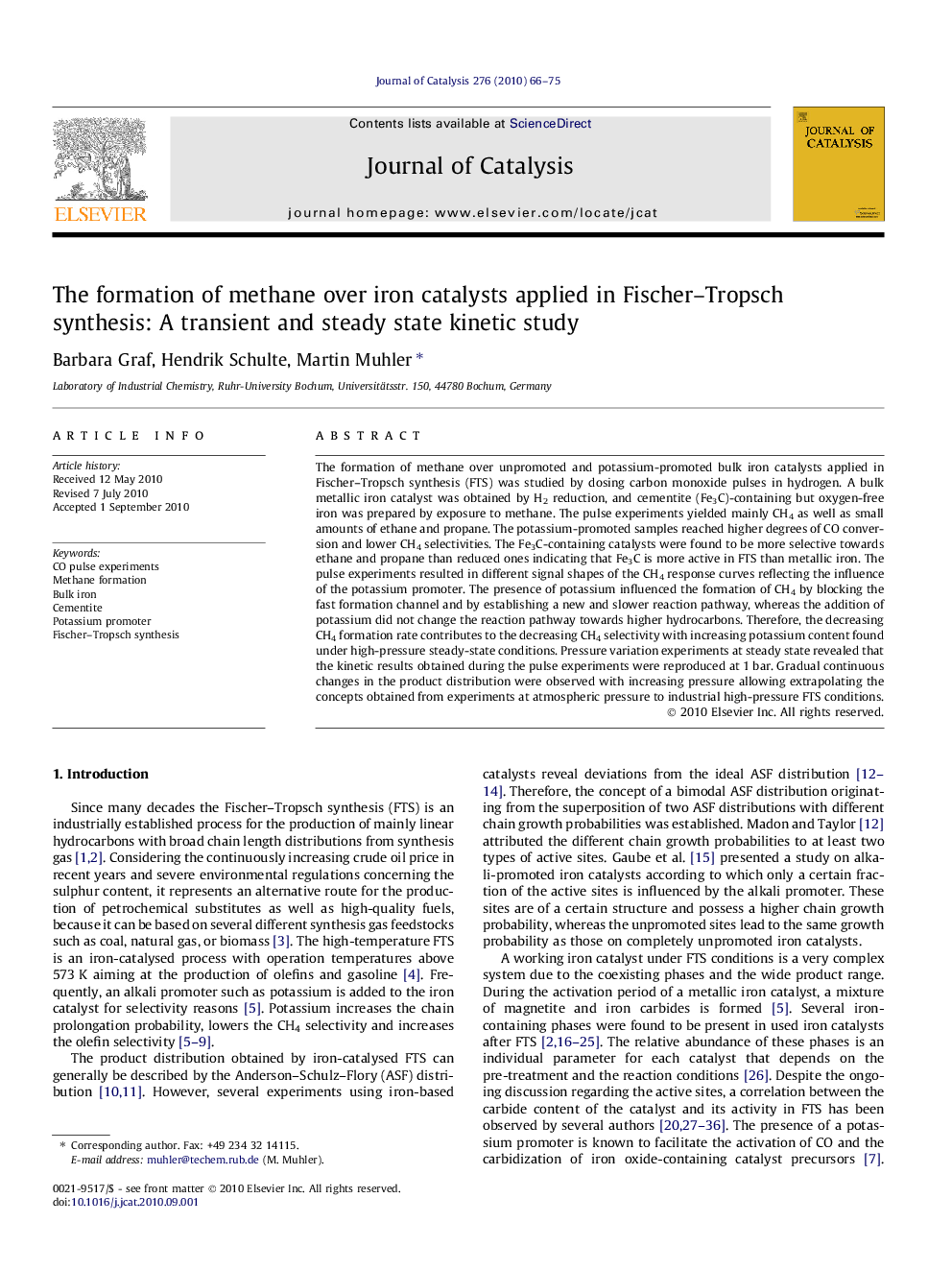| Article ID | Journal | Published Year | Pages | File Type |
|---|---|---|---|---|
| 62056 | Journal of Catalysis | 2010 | 10 Pages |
The formation of methane over unpromoted and potassium-promoted bulk iron catalysts applied in Fischer–Tropsch synthesis (FTS) was studied by dosing carbon monoxide pulses in hydrogen. A bulk metallic iron catalyst was obtained by H2 reduction, and cementite (Fe3C)-containing but oxygen-free iron was prepared by exposure to methane. The pulse experiments yielded mainly CH4 as well as small amounts of ethane and propane. The potassium-promoted samples reached higher degrees of CO conversion and lower CH4 selectivities. The Fe3C-containing catalysts were found to be more selective towards ethane and propane than reduced ones indicating that Fe3C is more active in FTS than metallic iron. The pulse experiments resulted in different signal shapes of the CH4 response curves reflecting the influence of the potassium promoter. The presence of potassium influenced the formation of CH4 by blocking the fast formation channel and by establishing a new and slower reaction pathway, whereas the addition of potassium did not change the reaction pathway towards higher hydrocarbons. Therefore, the decreasing CH4 formation rate contributes to the decreasing CH4 selectivity with increasing potassium content found under high-pressure steady-state conditions. Pressure variation experiments at steady state revealed that the kinetic results obtained during the pulse experiments were reproduced at 1 bar. Gradual continuous changes in the product distribution were observed with increasing pressure allowing extrapolating the concepts obtained from experiments at atmospheric pressure to industrial high-pressure FTS conditions.
Graphical abstractCH4 formation over unpromoted and potassium-promoted iron catalysts applied in Fischer–Tropsch synthesis was studied via hydrogenation of CO during pulse experiments. The presence of potassium influences CH4 formation by blocking the fast formation channel at least partially and establishing a new and slower reaction pathway.Figure optionsDownload full-size imageDownload high-quality image (59 K)Download as PowerPoint slide
